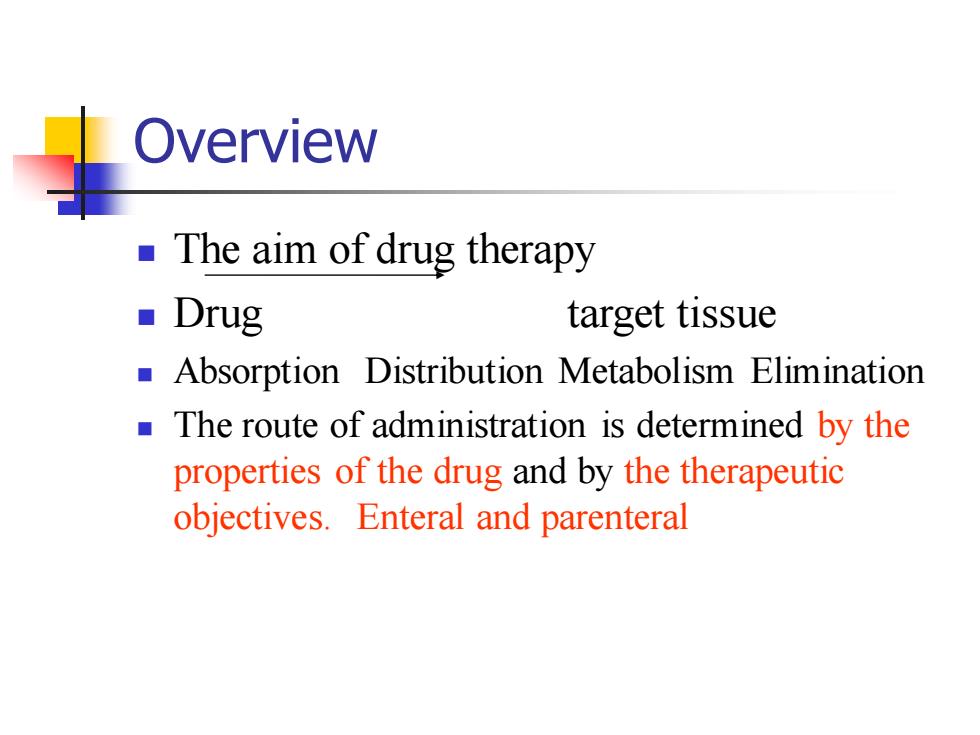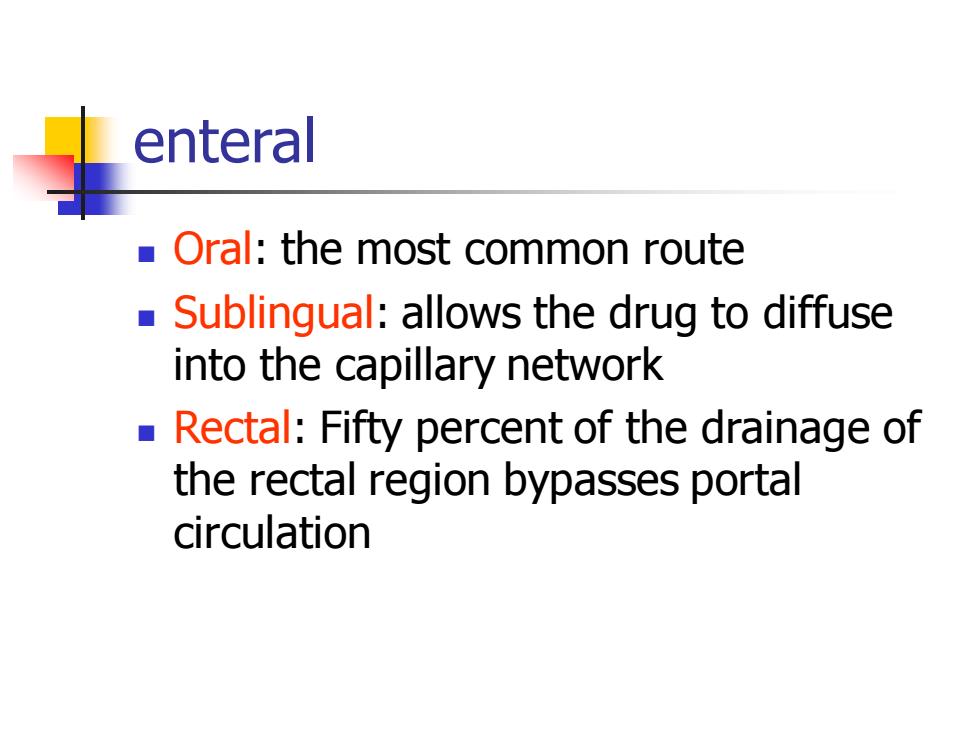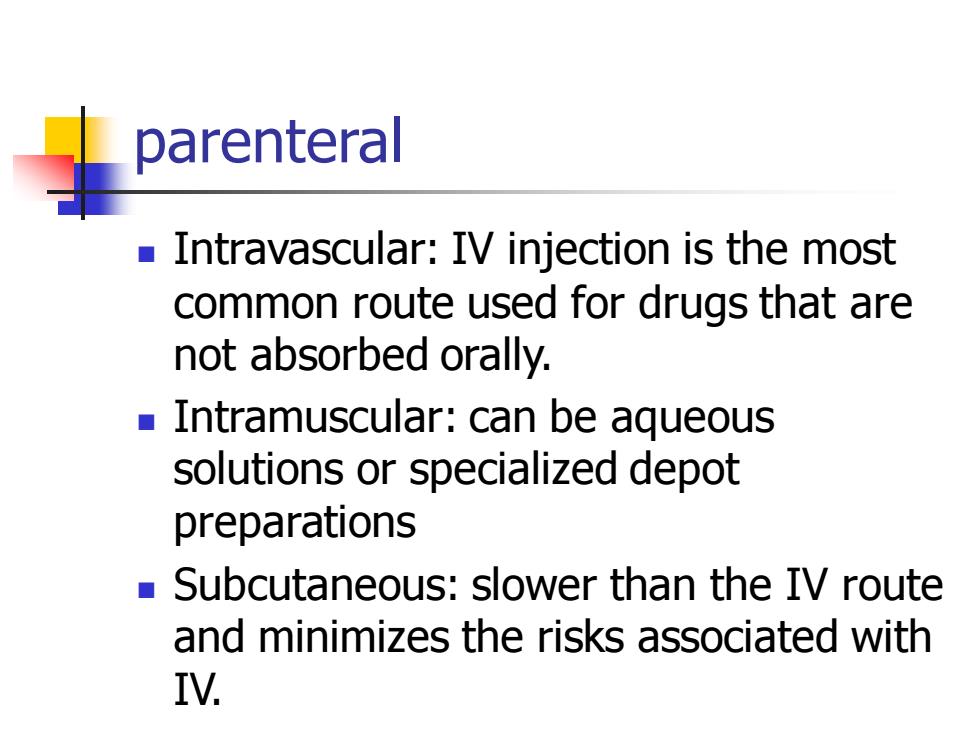
Introduction to Pharmacology
Introduction to Pharmacology

Overview The aim of drug therapy ■Drug target tissue Absorption Distribution Metabolism Elimination The route of administration is determined by the properties of the drug and by the therapeutic objectives.Enteral and parenteral
Overview ◼ The aim of drug therapy ◼ Drug target tissue ◼ Absorption Distribution Metabolism Elimination ◼ The route of administration is determined by the properties of the drug and by the therapeutic objectives. Enteral and parenteral

Drug at site of administration Absorption (input) Drug in plasma 2Distribution Drug in tissues Metabolism Metabollte(s)in tissues ④Elimination (output) Drug and/or metabolite(s) in urine,feces,bile Figure 1.1 Schematic representation of drug absorption,distribution,metabolism and elimination

enteral Oral:the most common route Sublingual:allows the drug to diffuse into the capillary network ■ Rectal:Fifty percent of the drainage of the rectal region bypasses portal circulation
enteral ◼ Oral: the most common route ◼ Sublingual: allows the drug to diffuse into the capillary network ◼ Rectal: Fifty percent of the drainage of the rectal region bypasses portal circulation

parenteral Intravascular:IV injection is the most common route used for drugs that are not absorbed orally. Intramuscular:can be aqueous solutions or specialized depot preparations Subcutaneous:slower than the IV route and minimizes the risks associated with IV
parenteral ◼ Intravascular: IV injection is the most common route used for drugs that are not absorbed orally. ◼ Intramuscular: can be aqueous solutions or specialized depot preparations ◼ Subcutaneous: slower than the IV route and minimizes the risks associated with IV